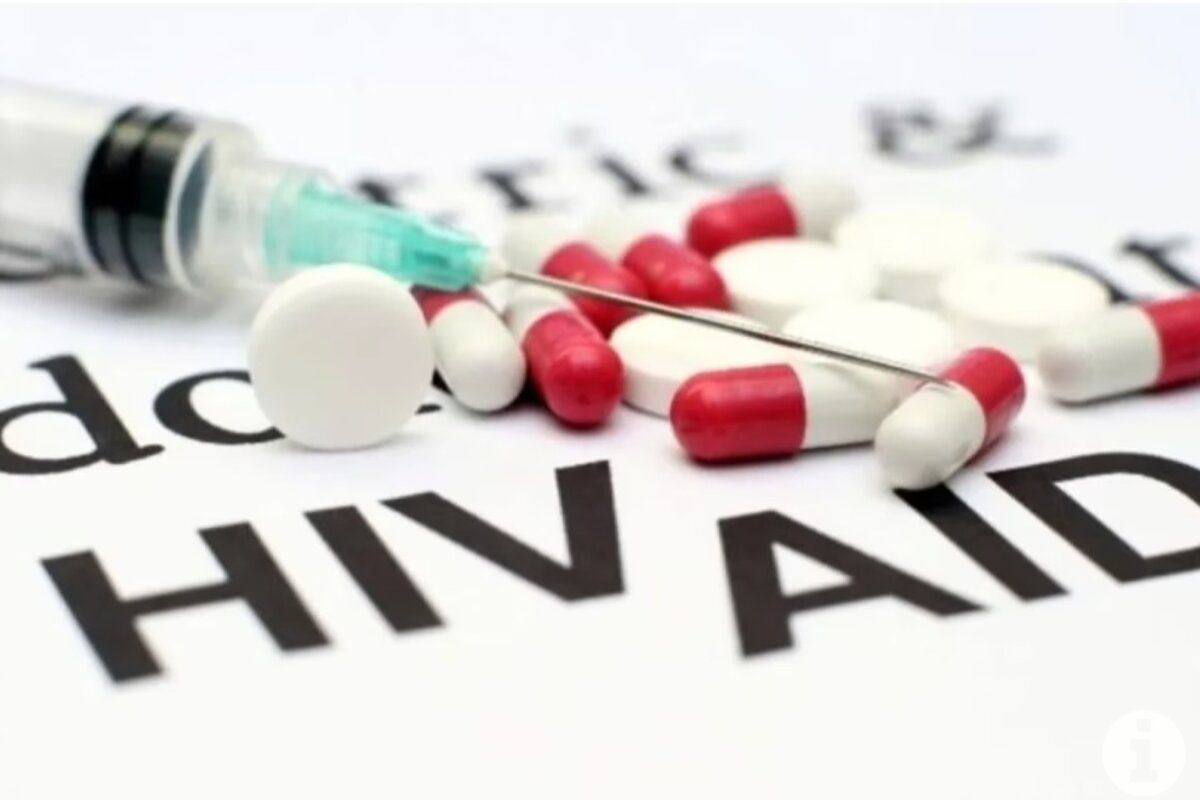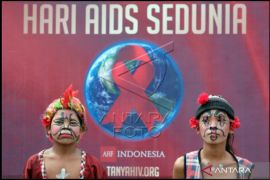World AIDS Day is also used as a platform to eliminate the negative stigma and discrimination surrounding people living with HIV/AIDS (PLWHA).
Usually, on that day, red ribbons are worn as a universal symbol of awareness and support for PLWHA. The color red was chosen as a symbol of courage, strong will, heart, and love.
Indonesia has made significant progress in its fight against HIV/AIDS. According to estimates from the Ministry of Health, in 2022, there were 510 thousand people aged over 15 years living with HIV in the country. The number is projected to decline to 500 thousand in 2023 and then 489 thousand in 2024.
Based on the records of the Joint United Nations Programme on HIV/AIDS (UNAIDS), the trend of new HIV transmissions in Indonesia declined by 52 percent in the period from 2010 to 2022, while AIDS-related deaths rose by up to 60 percent.
Various strategic steps have been taken to achieve the target of making the nation AIDS free by 2030 amid several challenges, one of which is the continued negative stigma and discrimination surrounding PLWHA, which hinders their access to health services.
When the disease was first detected in 1981 in the United States (US), people called it "GRID (gay-related immunodeficiency)" or "gay plague."
At the time, doctors did not know why a group of young gay men were suddenly acquiring rare infections and cancer, which was leading to their death.
Doctors then discovered that the disease was not only restricted to the gay population, but also affecting those using needles, women, babies, and heterosexual men.
So far, the Indonesian community's response to the disease and PLWHA has involved fear, rejection, stigma, and discrimination.
The public's fear of the disease stems from the number of deaths caused by the virus, which is quite high. According to the World Health Organization (WHO), since the initial emergence of the virus in the 1980s, almost 60 million people have been infected with it, and 25 million of them have succumbed to it.
As a result, some people refuse to be in close proximity with PLWHA, refuse to share toilets with them, be in the same room, or chat with them because they are afraid of getting infected.
There is also negative stigma attached to PLWHA, considering that the groups who are at risk of getting infected with the virus include sex workers, injection drug users, men who have sex with men (MSM), and transgender persons.
Those are groups who are considered to have "deviant" behaviors that go against social norms.
The negative stigma and discrimination have also continued against PLWHA who are not a part of those groups, such as babies and children, as well as women who have only had sexual relations with one man (their husband) and have not indulged in sexual activities that can be considered deviant. Those groups are only suffering due to the consequences of the unhealthy behavior of their father or spouse.
Women from this group not only contract the disease, but are also subjected to social punishment from the community.
As per the Ministry of Health's records, in 2023, HIV transmissions among housewives reached 35 percent, and husband-to-wife transmissions accounted for 30 percent of the total cases.
Social isolation
In a survey carried out in Indonesia in 2022, UNAIDS asked respondents whether they would buy goods from sellers infected with HIV and whether children with HIV can attend the same school as children without HIV. At least 68.7 percent of the respondents answered "no," the agency reported.
As many as 62.6 percent of the respondents answered "no" to the first question, while 33.5 percent also answered "no" to the second question.
The stigma and discrimination they face can cause PLWHA to shut themselves off and keep their status under wraps. In such cases, only certain people know of their disease status, such as health workers, parents, or spouses.
One woman shared that she only told her second husband about her HIV status when she got pregnant. She was infected by her ex-husband, who was a drug addict.
Fortunately, her husband understood her situation and supported her in seeking treatment. The child that she gave birth to tested negative for HIV.
People tend to feel shocked and sad upon finding out that they are HIV-positive. This can cause psychosocial problems, which, if allowed to continue, can further reduce the body's immunity, and it is not impossible that it may cause AIDS to occur faster.
Meanwhile, when PLWHA decide to reveal their disease status to those closest to them, they need to be prepared for the likelihood that their spouse or family may not be able to accept it.
However, support from family and close ones is an important part of HIV/AIDS treatment. Attention and acceptance encourage PLWHAs to live their lives.
Many people tend to think that at-risk groups have violated religious rules and social norms; however, isolating them and treating them unfairly is not right because it hinders their access to treatment.
Fear of ostracism can even lead people to decide against getting tested for HIV.
For Indonesia, the WHO is targeting to ensure that by 2025, as many as 95 percent of people with HIV know their status, 90 percent of PLWHA get antiretroviral therapy, and virus development is curbed in 86 percent of PLWHA receiving treatment.
Meanwhile, the target for eliminating HIV/AIDS by 2030 is 95-95-95; namely, 95 percent of PLWHA know their status, 95 percent of PLWHA undergo antiretroviral therapy, and 95 percent of those treated experience a reduction in viral load, or the amount of virus in their blood.
Currently, only 75 percent of PLWHA know their status, 39.6 percent are undergoing antiretroviral therapy, and 32.4 percent of PLWHA undergoing treatment have experienced a decline in viral load.
With advances in the medical field, PLWHA can enjoy a longer and better life. Scientists have also found medicines to prevent transmission.
This is reason enough to say that, with the right treatment, AIDS need no longer be a death sentence.
Related news: Community key to Indonesia's HIV/AIDS eradication by 2030: Official
Related news: Free HIV/AIDS treatment available to all: Health official
Related news: Jakarta monkeypox cases mostly HIV positive: Official
Translator: Sri Haryati, Raka Adji
Editor: Azis Kurmala
Copyright © ANTARA 2023












